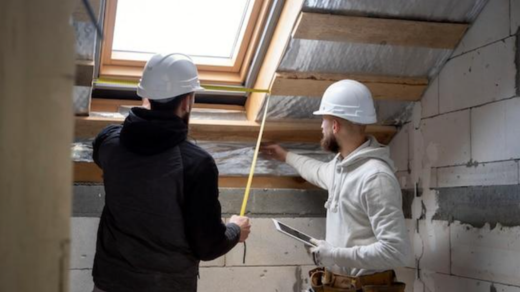Navigating the Lead Safe Certification Process: A Comprehensive Guide

Owning a home comes with a myriad of responsibilities, and one of the most critical yet often overlooked aspects is ensuring lead safety. Lead exposure can have devastating consequences, particularly for young children, leading to developmental delays, learning difficulties, and even neurological damage. This is where lead-safe certification becomes a crucial safeguard for homeowners.
Understanding Lead-Safe Certification
Lead safe certification is a comprehensive process that verifies the safety of a property concerning lead-based paint and other lead-containing materials. This certification not only protects the health and well-being of the occupants but also serves as a valuable asset when it comes to real estate transactions and rental agreements.
In many older homes, lead-based paint was commonly used, and over time, it can deteriorate, releasing toxic lead particles into the air and settling on surfaces. Exposure to these lead-contaminated areas can have severe health implications, especially for children under the age of six, whose rapidly developing brains are particularly vulnerable.
The Lead Safe Certification Process
The lead-safe certification process typically involves the following steps:
Inspection and Testing:
The first step in the lead safe certification process is a thorough inspection of the property. A certified lead inspector will conduct a comprehensive assessment, identifying any areas where lead-based paint or other lead-containing materials may be present. This may involve visual inspections as well as specialized testing techniques, such as x-ray fluorescence (XRF) analysis or dust wipe sampling.
Risk Assessment:
Based on the inspection findings, the lead inspector will perform a risk assessment to determine the level of lead hazard present in the home. This assessment will take into account factors such as the condition of the paint, the likelihood of lead-contaminated dust, and the potential for lead exposure.
Remediation and Abatement:
If the risk assessment reveals the presence of lead-based hazards, the next step is to address them through remediation or abatement. This may involve the removal, encapsulation, or enclosure of lead-containing materials, as well as the proper cleaning and disposal of lead-contaminated dust and debris.
Clearance Testing:
Once the remediation or abatement work is complete, the property undergoes a clearance inspection and testing. This process ensures that the lead hazards have been effectively eliminated and that the home meets the required lead safety standards.
Certification Issuance:
Upon successful completion of the clearance testing, the homeowner will receive the lead-safe certification, which typically remains valid for a specified period, often ranging from one to five years, depending on the jurisdiction.
Maintaining Lead-Safe Certification
Maintaining lead-safe certification is an ongoing process. Homeowners must be vigilant in monitoring the condition of lead-based paint and other lead-containing materials and promptly address any deterioration or damage that may occur. Regular inspections and routine maintenance can help ensure that the property remains lead-safe and the certification remains valid.
Conclusion
Lead safe certification is a vital safeguard for homeowners, protecting the health and well-being of their families. By understanding the importance of this certification and navigating the comprehensive process, homeowners can take proactive steps to create a safer, healthier living environment. Remember, lead-safe certification is not just a legal requirement but a testament to your commitment to providing a secure and nurturing home for your loved ones.



